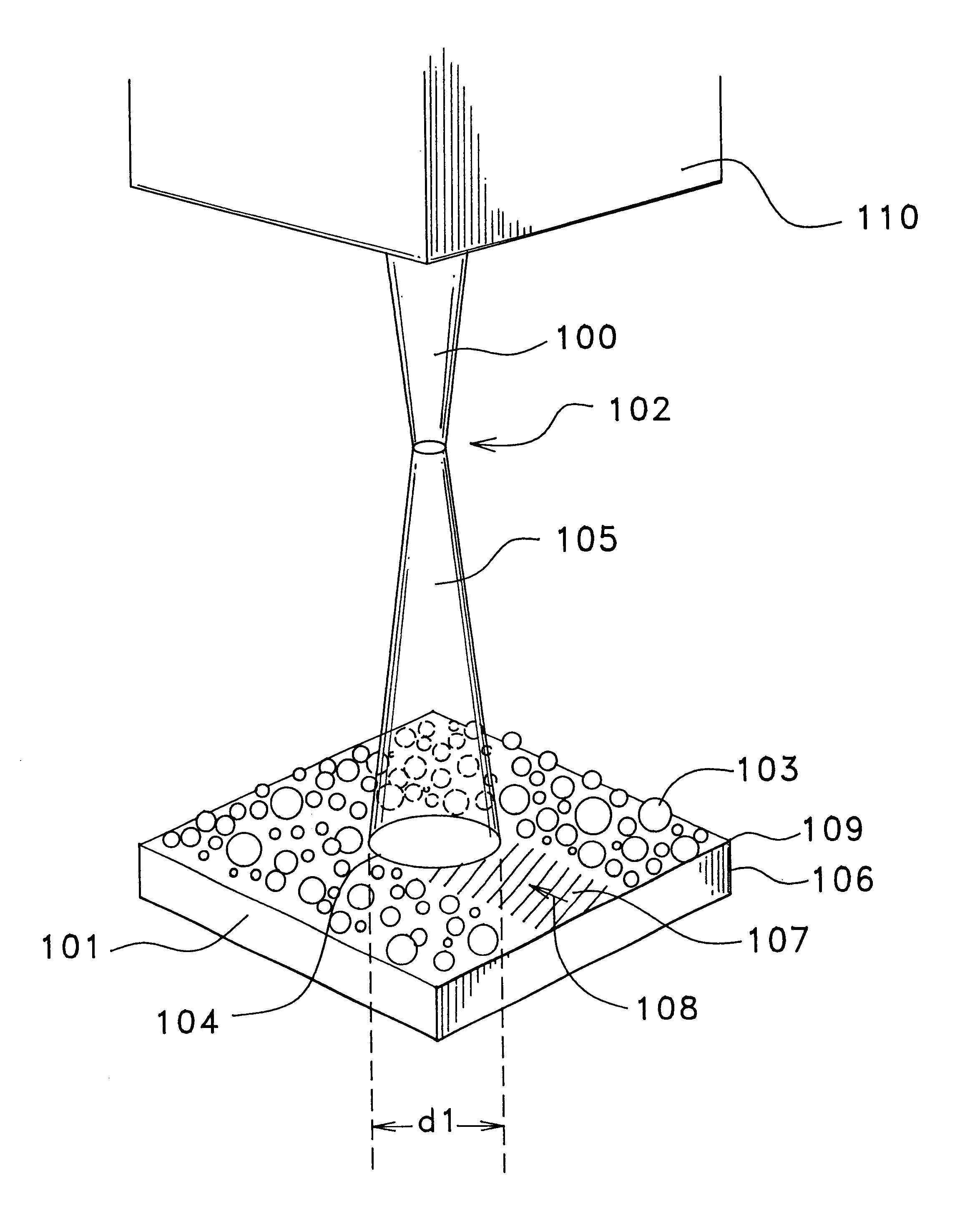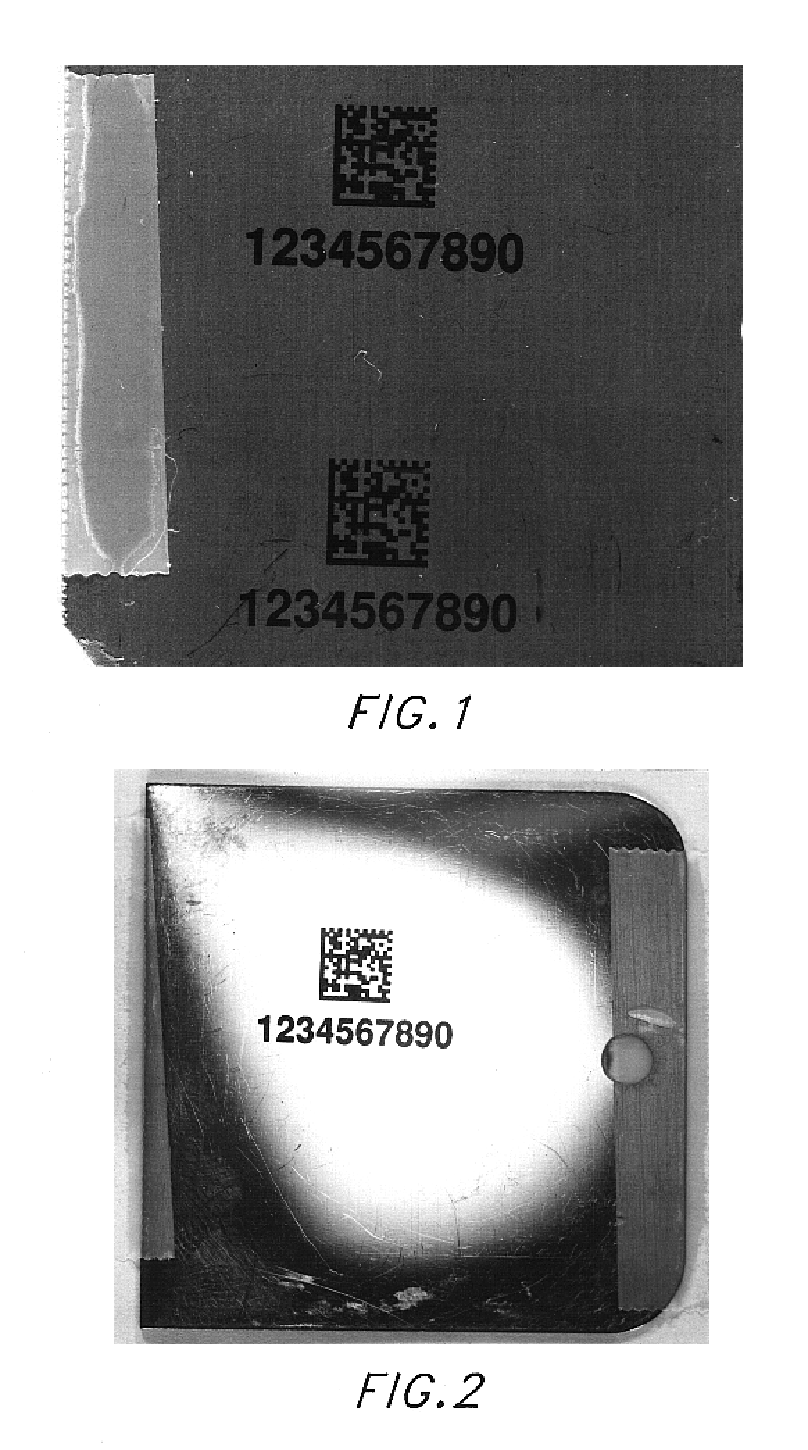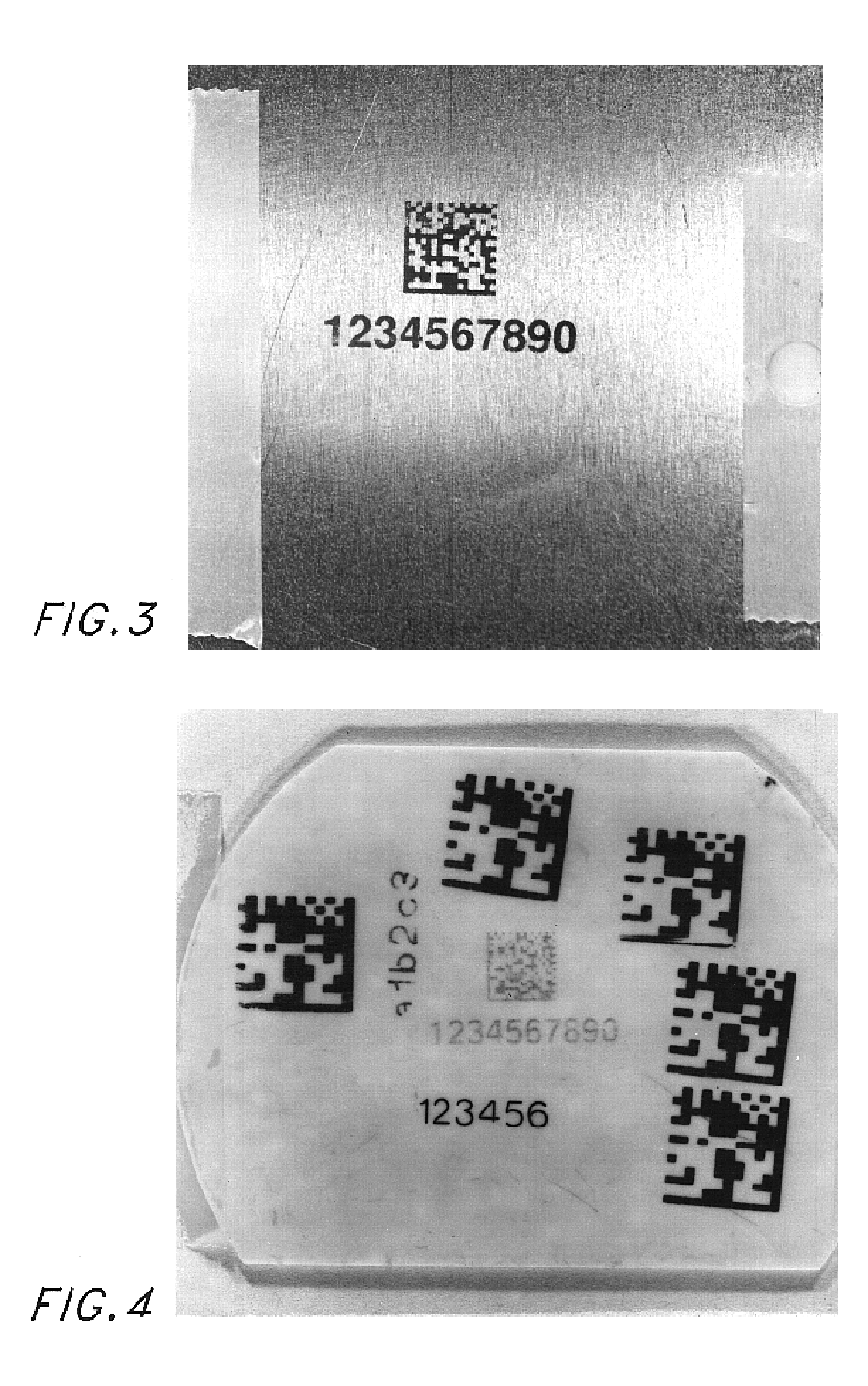High contrast surface marking using irradiation of electrostatically applied marking materials
a technology of electrostatically applied marking materials and high contrast surface, which is applied in the direction of thermography, instruments, recording apparatuses, etc., can solve the problems of inability to mark transparent enameled objects, material damage, and inability to meet the requirements of the product,
- Summary
- Abstract
- Description
- Claims
- Application Information
AI Technical Summary
Benefits of technology
Problems solved by technology
Method used
Image
Examples
example b
HYPOTHETICAL EXAMPLE B
The marking materials and substrate described and illustrated in FIG. 1 above are employed, applying the marking materials electrostatically as liquid droplets. Application of the same laser beam producers markings which have more even edges, a smoother surface and more uniform thickness.
example c
HYPOTHETICAL EXAMPLE C
The marking materials and substrate described and illustrated in FIG. 5 above are employed, applying the marking materials electrostatically as dry particles. Application of the same laser beam producers markings which have more even edges, a smoother surface and more uniform thickness.
example d
HYPOTHETICAL EXAMPLE D
The marking materials and substrate described and illustrated in FIG. 5 above are employed, applying the marking materials electrostatically as liquid droplets. Application of the same laser beam producers markings which have more even edges, a smoother surface and more uniform thickness.
Before explaining the disclosed embodiment of the present invention in detail, it is to be understood that the invention is not limited in its application to the details of the particular arrangement shown, since the invention is capable of other embodiments. Also, the terminology used herein is for the purpose of description and not of limitation.
PUM
| Property | Measurement | Unit |
|---|---|---|
| Temperature | aaaaa | aaaaa |
| Thickness | aaaaa | aaaaa |
| Thickness | aaaaa | aaaaa |
Abstract
Description
Claims
Application Information
 Login to View More
Login to View More - R&D
- Intellectual Property
- Life Sciences
- Materials
- Tech Scout
- Unparalleled Data Quality
- Higher Quality Content
- 60% Fewer Hallucinations
Browse by: Latest US Patents, China's latest patents, Technical Efficacy Thesaurus, Application Domain, Technology Topic, Popular Technical Reports.
© 2025 PatSnap. All rights reserved.Legal|Privacy policy|Modern Slavery Act Transparency Statement|Sitemap|About US| Contact US: help@patsnap.com



